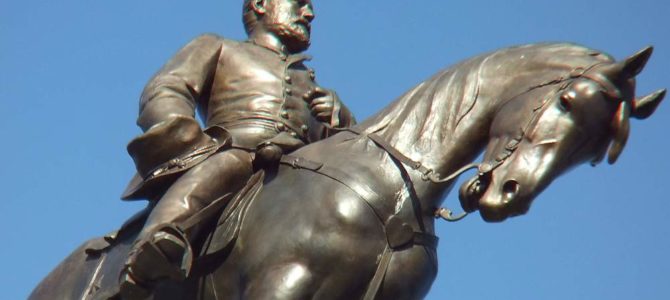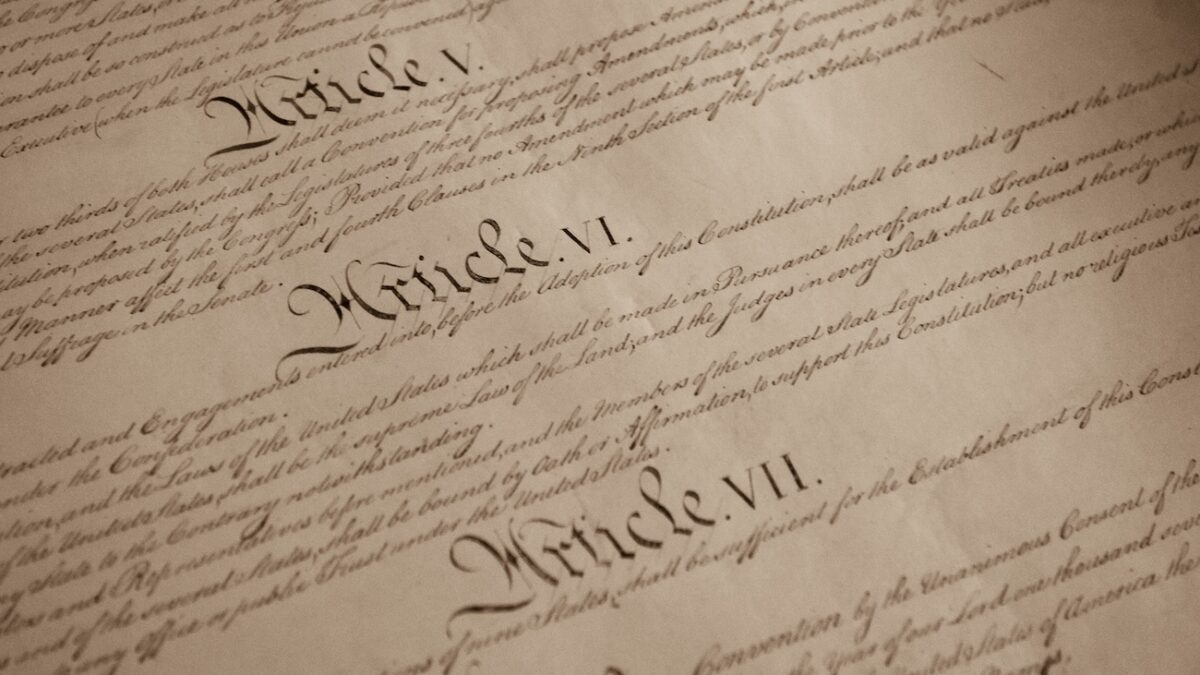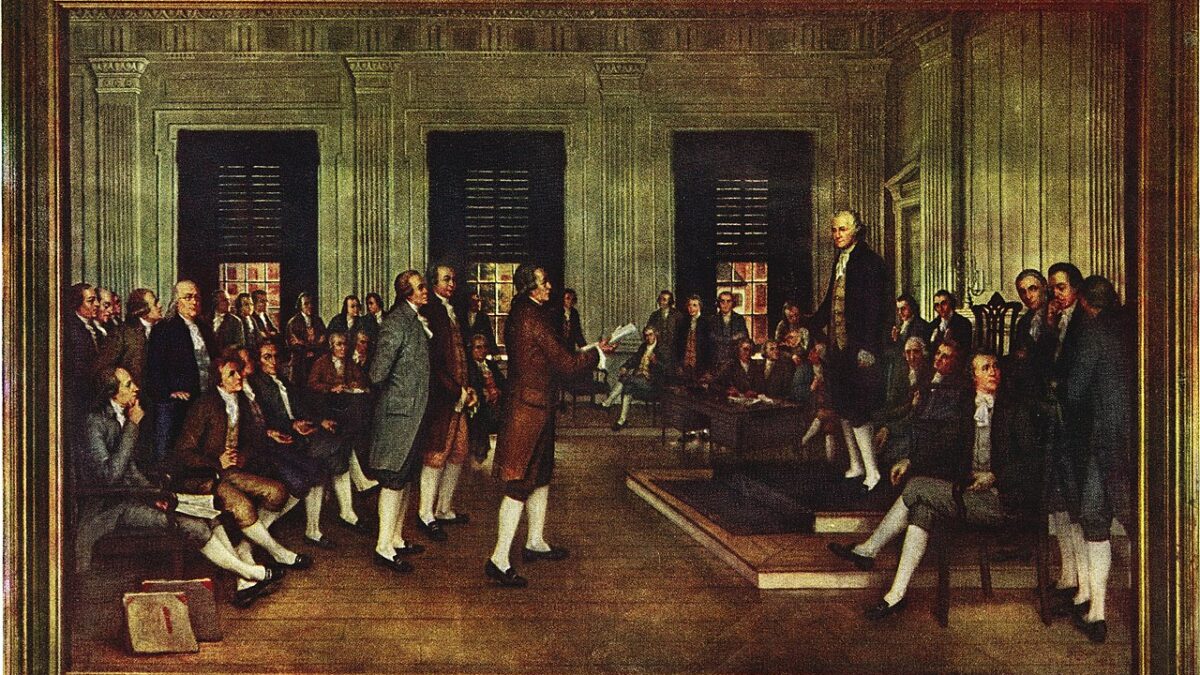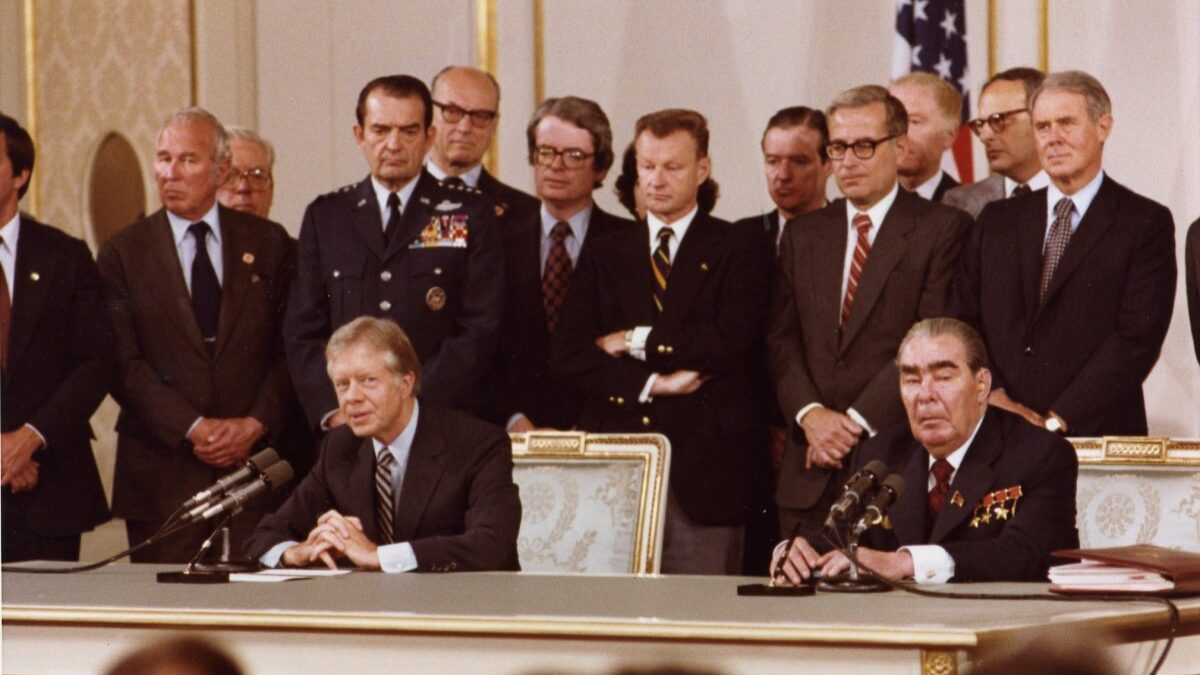
This year, we have been going through an overdue, if overzealous, reexamination of the place of Confederate imagery in a modern American society. After demolishing a statue commemorating the end of Reconstruction in New Orleans, activists have progressed to calling for the demolition of all Confederate war memorials. Some have even directed ire at a statue of Texas Founding Father Sam Houston—despite his impeccable pro-Union, anti-Confederate principles—because he owned slaves. At this rate, calls for razing the Washington Monument will not be far behind.
The answer lies somewhere in between the two extremes of neo-Confederate reactionaries and Antifa memory-holers. As radical as they are, lefty extremists’ position is at least useful in making us rethink the elevation of Confederate leaders to heights that, even ignoring the fact that they bore arms against the United States, would be undeserved.
In the decades following the Civil War, proponents of the Lost Cause myth created legends of men who were often merely mediocre. Nowhere is that more true than in the near-deification of Gen. Robert E. Lee.
True, Robert E. Lee Had a Fine Résumé
In 1861, Lee resigned his commission after a career of efficient, if unremarkable, service in the U.S. Army. His graduation from West Point in 1829 with zero demerits was exemplary—one of the few cadets to achieve that level of good behavior. He served honorably in the Mexican War, but as a staff officer rarely had occasion to showcase the strategic brilliance of Winfield Scott or dashing élan of John C. Frémont. Even Ulysses S. Grant, later maligned as a mediocrity by pro-Southern historians, was able to cover himself in glory when he dragged a howitzer into the bell tower of a church and bombarded enemy troops at the Battle of Chapultepec.
Lee’s peacetime service after Mexico could best be described as correct. His most noteworthy action was capturing John Brown during Brown’s well-intentioned but ineptly managed rebellion in 1859. When the Civil War began, Lee was stationed in a fort on the Mexican border. He returned home to Virginia and, unlike fellow Virginian generals Winfield Scott and George H. Thomas, he followed the Commonwealth into secession and war against the United States.
Lee became a full general in the Confederate Army early in the War, one of five so promoted. His initial combat action called that rank into doubt. At the Battle of Cheat Mountain in what was soon to become West Virginia, Lee’s forces outnumbered the Union army but threw away that advantage through poor coordination. It would go down as a minor battle, but at the time it was enough for Confederate President Jefferson Davis to reassign Lee to manage the coastal defenses of Georgia and the Carolinas.
Soon thereafter, federal troops captured Fort Pulaski on the Georgia coast, largely due to their innovative use of technology, which caught Lee flat-footed. It was a pattern that would repeat.
A Pattern of Errors
Lee was recalled to Richmond as the Union Army of the Potomac advanced toward the city. Initially placed in charge of the capital defenses, Lee’s cautious entrenchment earned him the nicknames “King of Spades” and “Granny Lee.” When Joseph E. Johnston, commander of the Confederate army defending Richmond, was injured, Lee took over command. Against the phlegmatic Union commander, George McClellan, Lee achieved his first victories, pushing the federal troops back from their position in the outskirts of Richmond.
Although he had finally shaken off his losing reputation, Lee’s tactical victories contained the seeds of the problems that would later doom him. Lee had McClellan on the run as the overcautious Pennsylvanian retreated back down the York-James peninsula toward transport ships for home. As he pulled back, however, McClellan ordered his men to occupy the high ground at Malvern Hill and entrench there. Lee, for all the faith he had earlier shown in entrenchments, now disregarded them and ordered his men to charge them head-on. The result was more than 5,000 Southern casualties. As Lee’s subordinate D.H. Hill later wrote, “it was not war; it was murder.”
Malvern Hill was not a one-time lapse in judgement for Lee. It revealed a fixed mindset about battle that, had any Union general picked up on it, might have led to a quick defeat for the Confederacy. Informed, like many of his generation of soldiers, by the battles of the Napoleonic Wars, Lee believed the path to victory was destroying the enemy army in one dramatic battle. Tactically, the idea suffered from advances in military technology—most especially in the development of the rifled musket—that rendered the frontal assault on an entrenched position far less likely to succeed.
Union generals were slow to learn this, too, as shown by unsuccessful and bloody assaults at Antietam and Fredericksburg. But even seeing the results from the other side failed to convince Lee. When he ordered Pickett’s Charge, a frontal assault on entrenched Union lines at Gettysburg in 1863, more than half the men involved were killed, wounded, or captured.
Better Tactics, Wrong Strategy
Lee nevertheless achieved some tactical success with his aggressive strategy. While these increased his legend, they did not win the war. That was because he was pursuing the wrong goal. The Union Army of the Potomac suffered many defeats and often retreated nearly back to its namesake river, but those defeats did not end the war. The United States was a nation. The defeat of an army did not imperil the people’s belief in that nation. They would fight on.
The Confederacy, to the contrary, was not yet a nation. Had they won, they may have built a nation in time, but in those early days the only evidence of the Confederacy’s existence in the popular mind was its armies. Lee’s goal of smashing the enemy army in a modern-day Cannae might have been a sound one, had he stayed loyal to the United States and led its armies instead. But at the head of an outnumbered newborn rebellion, his goal should not have been to fight bloody battles; it should have been to survive.
Instead of Napoleon, Lee would have done better to look closer to home for an example of how to win. George Washington faced a similar situation to Lee’s when leading the Continental Armies against the world-bestriding British Empire in the American Revolution. He did not seek battle with the better-equipped redcoats at every opportunity. Instead, he preserved the army, the seed of the American nation, until the conditions were perfect. That took years of patience, and keeping the army’s spirits high was nearly impossible, but the payout—victory at Yorktown—vouchsafed the nation’s future.
Apotheosis of General Lee
It took two more years for Abraham Lincoln to find a general intelligent enough to attack Lee’s great flaw. When Grant came east, he let Lee’s aggression doom the Southern armies. Grant took the fight to the enemy, forced him to defend his capital, and made him choose between the retreat his pride could not bear and casualties his army could not afford. Lee chose death. His army withered away, as did his putative nation.
Lee, like Napoleon, became revered in defeat, while Grant’s memory was derided. The Napoleonic Wars lasted 12 years and the French won most of them, so there is some reason to revere the French emperor and general. The American Civil War lasted a third as long and was an unqualified loss to the rebels. But America was a nation that had never known defeat. When its Southern states tasted it for the first time, they had a hard time accepting the shock.
That in itself is not unusual. Germans felt the same in 1914, and the rest of America still has mixed feelings on the results of the Vietnam War. Loving your country and seeing it lose is a hard thing to take. What is strange is how the erstwhile rebels treated the political and military leaders who led them into defeat. Germans turned on the Kaiser quickly, and Americans have few kind words for the presidents and generals who led us in the Vietnam era, but Southerners revered the leaders of their failed rebellion. Many still do.
Lee is often singled out for praise above the other Confederates unlike the case in his own lifetime. The cult that developed around Lee after his death in 1870 became fiercely protective of his reputation, even to the detriment of his military subordinates and political superiors. As historian Thomas Connelly explained in “The Marble Man: Robert E. Lee and His Image in American Society,” Lee soon came to represent everything that the defeated South loved about itself. The Lee cult, he wrote, “distorted or obscured the real individual… [and] a great historical figure in his own right was shaped into what others wished him to be, and has become something that he never was.”
Lee came to stand for nostalgia itself, which in the post-Reconstruction era took on a racial and political cast, as well. The erection of the now-controversial statutes began during the retreat from Reconstruction after 1877, during the rise of Jim Crow. For many white Southerners of that time and later, Lee embodied their heritage. Lee was the South.
Let Us Have Peace
That hero-worship has led to an exaggerated view of Lee’s competence as a general. Rather than reflecting on the wrongness of their mission and the blunders of their leaders, ex-Confederates spun the myth of a Lost Cause, a story of a noble pursuit that was doomed to fail. Northerners, with an eye toward national reconciliation, joined to some extent, even degrading their own generals’ reputation while puffing up those of Lee and his comrades. It is an error that clouded historical scholarship for a century and is only beginning to be addressed in popular memory.
In one respect, though, Lee does provide a useful example to modern Americans. After his defeat, Lee resisted calls to continue the doomed effort through guerilla warfare. Other less honorable colleagues, like Gen. Nathan Bedford Forrest, adopted the tactics of terror after the war. Lee refrained. Following, at last, the example of Washington, he retired to a peaceful life in the country and encouraged the men he once led to do likewise. Here he and Grant were of one mind, and Lee’s actions echoed Grant’s words: “Let us have peace.”
His tactics were flawed, his strategy was wrong, and the cause he fought for was unjust, but we can all learn from Lee’s grace in defeat. His memory has been twisted and misused as a symbol of resistance to the federal government that defeated him, but that was not Lee’s doing. A man’s memory should stand on its own, not as the emblem of bitter-end lost causers. That’s a lesson as important then as it is now.









